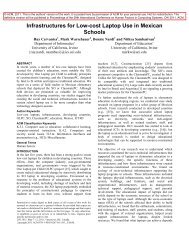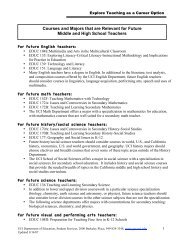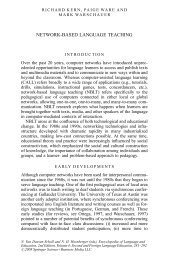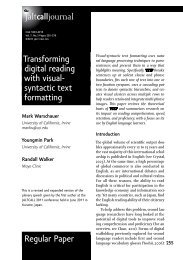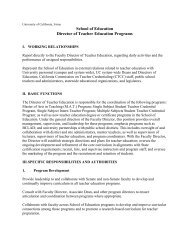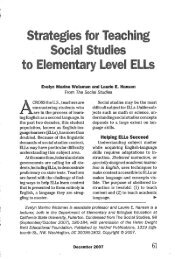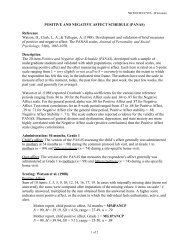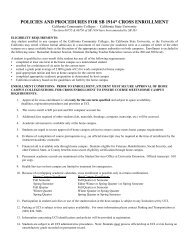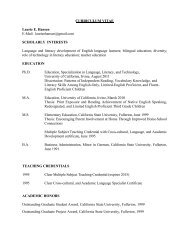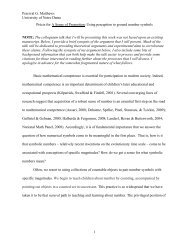Does Detracking Work? Evidence from a Mathematics Curricular ...
Does Detracking Work? Evidence from a Mathematics Curricular ...
Does Detracking Work? Evidence from a Mathematics Curricular ...
You also want an ePaper? Increase the reach of your titles
YUMPU automatically turns print PDFs into web optimized ePapers that Google loves.
<strong>Detracking</strong> 20provides a better metric for measuring the consequences of curricular intensification on studentachievement than the mathematics CSTs administered to California high school students, sinceall students take the test in the same form, regardless of their mathematics course enrollment.However, since the most advanced concepts tested on the exit exam are covered in Algebra Icourses, analyses of student scores on the exit exam may understate the effects of curricularintensification. 7 This is particularly true at the top of the skill distribution, where test ceilingeffects make it difficult to assess the extent to which curricular changes influence studentachievement.We first estimate the average effect of curricular intensification on average studentachievement using OLS regression models that take the same general form as the ordered logisticregression models described above. The Year coefficients in these models capture the meanchanges in student mathematics achievement across cohorts, controlling for changes in studentcomposition and 7 th grade skills. In addition, we estimate Year*Course interaction effects tomeasure the extent to which curricular intensification changed the payoff associated with takingAlgebra or Geometry over time. Finally, we add controls for skill heterogeneity and mean skilllevel in 8 th grade mathematics classrooms to determine the extent to which the challengesassociated with teaching heterogeneous classrooms and peer effects mediate the effects ofcurricular intensification on student achievement.We also estimate quantile regression models, which allow us to compare the achievementdistributions of the cohorts at a variety of points in the distribution. For example, while the OLSresults provide us with information about how the mean of two cohorts differ, quantile regression7 We also conduct analyses separately for CAHSEE subscores measuring Algebra I, Algebra and Functions, andMeasurement and Geometry. As there are no noteworthy differences, we do not report them here.


